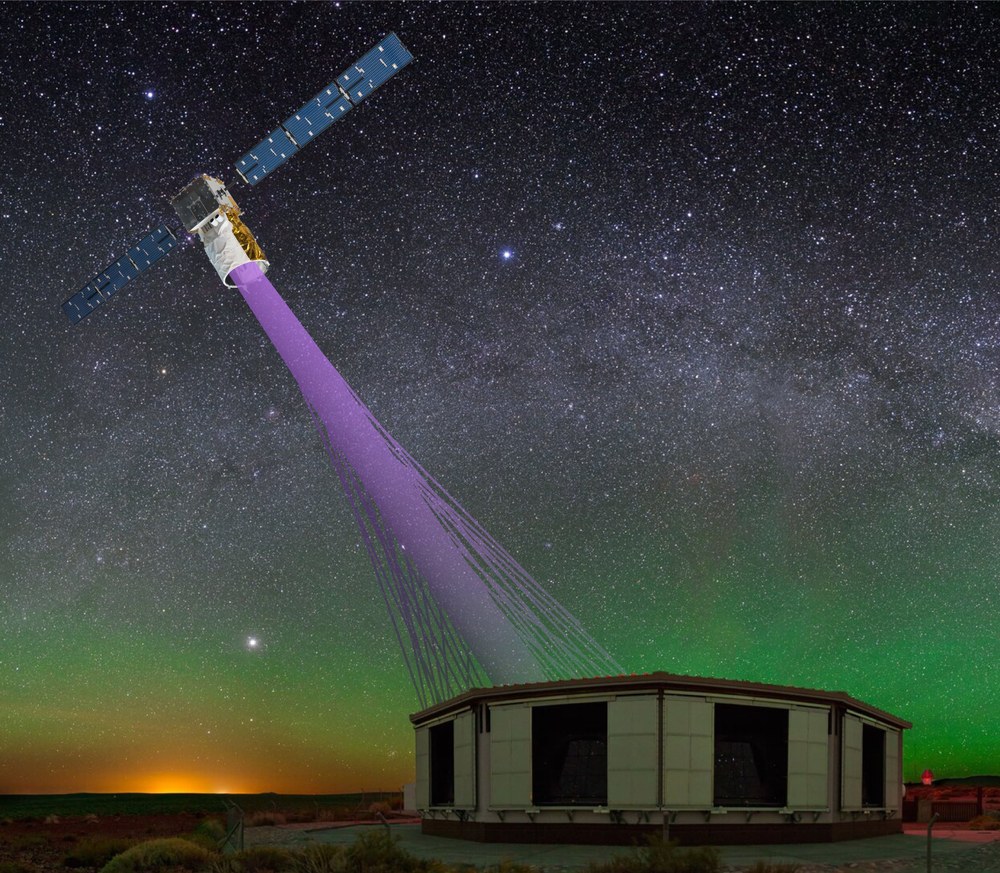Space-based laser measured from Earth – an unusual collaboration leads to spectacular results
Thanks to the extraordinary cooperation between the space mission Aeolus and the Pierre Auger Collaboration, it was possible, for the first time, to measure a laser beam emitted from space by an Earth-based observatory. The laser transmitter was part of the first spaceborne Doppler wind lidar ALADIN (Atmospheric LAser Doppler INstrument), which was launched in August 2018 on board the European Space Agency's (ESA) Aeolus satellite. The Aeolus mission was a great accomplishment for the European space sector and ended in July 2023 with the satellite's assisted re-entry into the Earth's atmosphere. The global wind data provided during the mission, which lasted almost five years, significantly improved weather forecasting and thus generated enormous economic and social benefits, which were quantified by socio-economic studies. Due to the extraordinary success of the Aeolus mission, ESA and EUMETSAT decided to develop an operational follow-up mission. DLR made a significant contribution to the achievements of the Aeolus mission by leading the Data Innovation and Science Cluster (DISC) and by conducting airborne validation campaigns in cooperation with ESA.
The Pierre Auger Observatory in Argentina is the world's leading experiment for measuring ultra-high-energy cosmic radiation in the Earth's atmosphere. One measurement method used for this purpose is fluorescence detection in the ultraviolet wavelength range, utilizing the fact that the high-energy but very rare (primary) particles trigger cascades of secondary particles in the Earth's atmosphere, so-called air showers. The ultraviolet fluorescent light emitted above the shower field is registered with several telescopes at four locations covering an area of around 3000 km². As the ALADIN laser emitted in the same spectral region at 355 nanometers, the observatory was able to detect the laser beam when Aeolus flew over the measurement area (Fig. 1).

Graphic: S. Saffi, O. Lux, CC BY-ND-NC 3.0
Similar to the fluorescent light of the air showers, the laser beam produced a linear structure on the detectors, which served as the basis for the geometric reconstruction of the laser beam on its path from space to the ground. The results of the first ground measurements in 2019 revealed an error in the calculation of the satellite's ground track in the Aeolus processor, which was subsequently corrected (Fig. 2a). In addition, precise modelling of the scattering of molecules and aerosols as well as the optical losses along the path through the atmosphere made it possible to determine the laser energy at the exit of the instrument in space (Fig. 2b). This was a spectacular way of independently quantifying the performance of the lidar instrument and narrowing down the root cause of a steady signal decrease detected in the ALADIN receiver in the period from 2019 to 2021 to the emission path.
The unique results have now been published in the renowned scientific journal Optica with the leading contributions of scientists from the Institute of Atmospheric Physics in cooperation with Aeolus colleagues at ESA and the company DoRIT. A significant contribution was made by colleagues from the Karlsruhe Institute of Technology (KIT) as part of the Pierre Auger Collaboration who analyzed the ground-based observations.
The combination of cutting-edge technology in space and on ground marks an important milestone both for active satellite remote sensing and for the physics of cosmic rays. The synergy between two very different research areas for space and earth observation was surprising for both communities and the method was established for the first time through the collaboration. This unprecedented "ground-truth" measurement by a ground observatory is hence also available for future space lidar missions such as EarthCARE with a planned launch in May 2024 and Aeolus-2 in the 2030s. In addition to the independent verification of space-based lasers, there is the potential for cross-calibrations between different observatories for the detection of cosmic rays.

